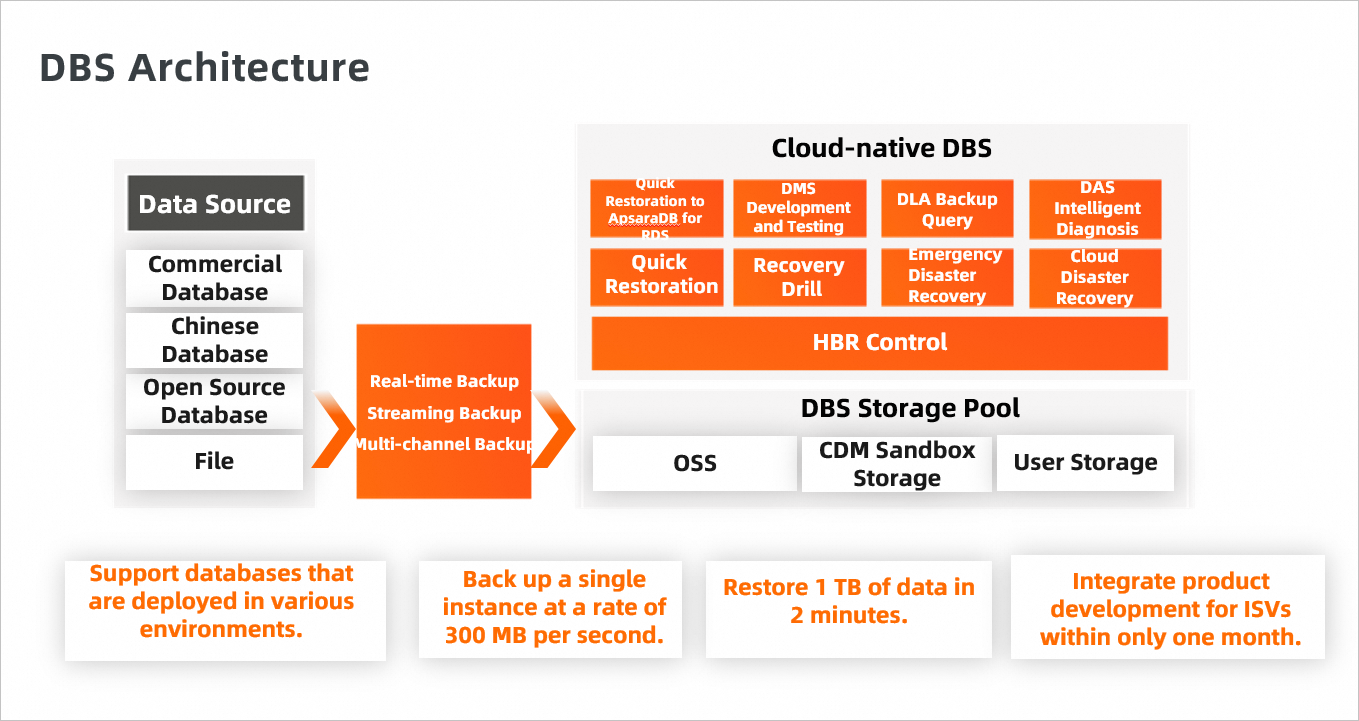Database Backup (DBS) is a cost-effective and highly reliable cloud-native database backup platform that is provided by Alibaba Cloud. DBS supports nearly 10 types of data sources such as MySQL, SQL Server, and Oracle databases. DBS also supports various environments where databases are deployed, such as ApsaraDB, Elastic Compute Service (ECS) instances, data centers, and cloud platforms provided by other cloud service providers. DBS can be accessed by using methods such as Database Gateway (DG), Express Connect, and VPN Gateway. This reduces the time and cost consumed for data backup.
Tutorial video
What is DBS?
DBS architecture

Why DBS?
Compared with traditional data backup methods, DBS provides unlimited backup storage, quick emergency recovery (within seconds), and recovery drills for dozens of mainstream database types. DBS activates cold data by creating sandbox instances within seconds and querying backup data. The following table describes the benefits of DBS.
Benefit | Description |
Benefit | Description |
Low recovery point objective (RPO) and recovery time objective (RTO) | DBS uses the log parsing and synchronization technologies of databases. This helps your business achieve the RPO and RTO within seconds. |
Cost-effectiveness | Cloud storage is flexible and easy-to-use, and can be extended in unlimited scenarios. DBS supports the pay-as-you-go billing method. |
Verifiability and ease of use | DBS restores data to ApsaraDB RDS and integrates with Data Lake Analytics (DLA) to support queries on backup data. |
Security and reliability | DBS uses Apsara Distributed File System to provide a highly reliable and comprehensive data encryption system. |
For more information about DBS, see Benefits and Common scenarios.
How to use DBS
You can use the following methods to back up data, restore data, and query backup data in DBS:
DBS console: The DBS console provides an easy-to-use web-based GUI. For more information, go to the DBS console.
Getting started: This guide describes how to purchase and configure a backup schedule. For more information, see Get started with DBS.
SDK: The operations that are available in the DBS console can be performed by using SDKs. For more information, see SDK Reference.
API: The operations that are available in the DBS console can be performed by using API operations. For more information, see List of operations by function.
More information
You can click a tab to show the details and click that tab again to hide the details.
